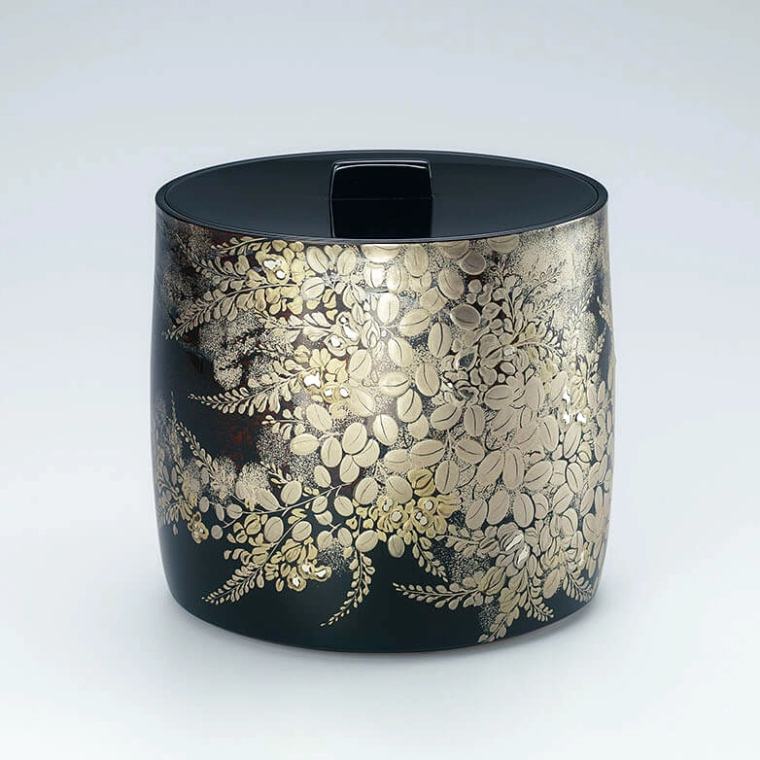Kanshitsu tea ceremony fresh water jar with paulownia design in makie.
H 16.0 / ø 16.5 cm,Year.2021Miyako Uchino
1953 -- Lacquerware
-
Price Range
Under $14,000
Info
The prices of the artworks on Gallery Japan are determined by the artists themselves and are published directly on the website.
close
Description
-
CategoryLacquerware
-
DimensionsH 16.0 / ø 16.5 cm
-
Year presented2021
-
RarityUnique
Techniques Used
Dry lacquer
For works of dry lacquer (kanshitsu), first a clay form is created and plaster is used to take a mold of the form. Next, repeated layers of hemp cloth and lacquer are applied to the mold until they are built up to the desired thickness. Finally, the mold is removed and additional coats of lacquer are applied to finish the piece. The hemp fibers are strengthened when the lacquer bonds with them, making dry lacquer an excellent technique for creating sturdy forms with a significant degree of freedom.
Maki-e
Maki-e (literally “sprinkled pictures”) is a representative lacquerware technique that originated in Japan around 1,200 years ago. Maki-e is done by painting lacquer motifs on the surface of a piece using a fine brush and then sprinkling gold powder onto the lacquer before it hardens, producing luxurious decorations.
Selected exhibitions
- The 68th Japan Traditional Kōgei Exhibition (2021)
- Selected

